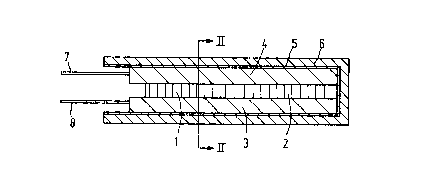Une partie des informations de ce site Web a été fournie par des sources externes. Le gouvernement du Canada n'assume aucune responsabilité concernant la précision, l'actualité ou la fiabilité des informations fournies par les sources externes. Les utilisateurs qui désirent employer cette information devraient consulter directement la source des informations. Le contenu fourni par les sources externes n'est pas assujetti aux exigences sur les langues officielles, la protection des renseignements personnels et l'accessibilité.
L'apparition de différences dans le texte et l'image des Revendications et de l'Abrégé dépend du moment auquel le document est publié. Les textes des Revendications et de l'Abrégé sont affichés :
| (12) Brevet: | (11) CA 1281532 |
|---|---|
| (21) Numéro de la demande: | 1281532 |
| (54) Titre français: | METHODE DE FABRICATION D'UN ELEMENT CHAUFFANT AUTOREGULATEUR |
| (54) Titre anglais: | METHOD OF MANUFACTURING A SELF-REGULATING HEATING ELEMENT |
| Statut: | Périmé et au-delà du délai pour l’annulation |
| (51) Classification internationale des brevets (CIB): |
|
|---|---|
| (72) Inventeurs : |
|
| (73) Titulaires : |
|
| (71) Demandeurs : | |
| (74) Agent: | SMART & BIGGAR LP |
| (74) Co-agent: | |
| (45) Délivré: | 1991-03-19 |
| (22) Date de dépôt: | 1987-01-20 |
| Licence disponible: | S.O. |
| Cédé au domaine public: | S.O. |
| (25) Langue des documents déposés: | Anglais |
| Traité de coopération en matière de brevets (PCT): | Non |
|---|
| (30) Données de priorité de la demande: | ||||||
|---|---|---|---|---|---|---|
|
ABSTRACT:
"Method of manufacturing a self-regulating heating element"
A method of manufacturing a self-regulating heating
element having a resistor with a positive temperature
coefficient as a heat source, the resistor(s) being located
within a thermoplastic casing between metal parts which it
(they) contact(s) in a heat-exchanging manner. For safety the
element is provided with a double insulation: one part which
is manufactured by moulding and which is, secondly, provided
internally and/or externally with a layer of an elastomer by
means of a solution.
Note : Les revendications sont présentées dans la langue officielle dans laquelle elles ont été soumises.
Note : Les descriptions sont présentées dans la langue officielle dans laquelle elles ont été soumises.

2024-08-01 : Dans le cadre de la transition vers les Brevets de nouvelle génération (BNG), la base de données sur les brevets canadiens (BDBC) contient désormais un Historique d'événement plus détaillé, qui reproduit le Journal des événements de notre nouvelle solution interne.
Veuillez noter que les événements débutant par « Inactive : » se réfèrent à des événements qui ne sont plus utilisés dans notre nouvelle solution interne.
Pour une meilleure compréhension de l'état de la demande ou brevet qui figure sur cette page, la rubrique Mise en garde , et les descriptions de Brevet , Historique d'événement , Taxes périodiques et Historique des paiements devraient être consultées.
| Description | Date |
|---|---|
| Inactive : Demande ad hoc documentée | 1994-03-19 |
| Le délai pour l'annulation est expiré | 1993-09-21 |
| Lettre envoyée | 1993-03-19 |
| Accordé par délivrance | 1991-03-19 |
Il n'y a pas d'historique d'abandonnement
Les titulaires actuels et antérieures au dossier sont affichés en ordre alphabétique.
| Titulaires actuels au dossier |
|---|
| N.V. PHILIPS GLOEILAMPENFABRIEKEN |
| Titulaires antérieures au dossier |
|---|
| ANDRE M.A. VAN BOKESTAL |
| HENRI L.P. LORRAIN |